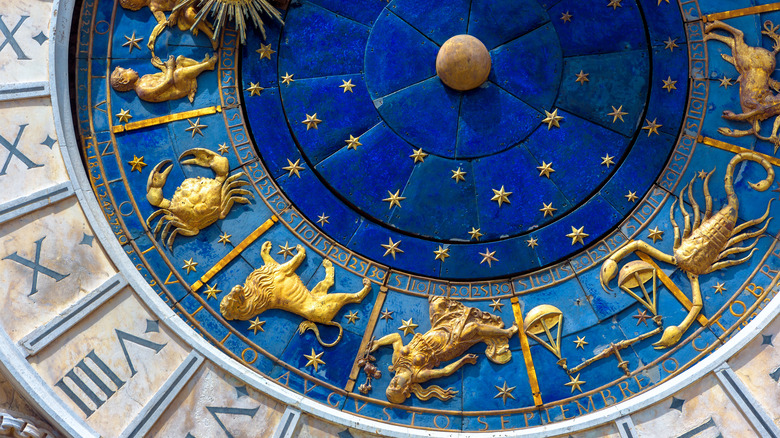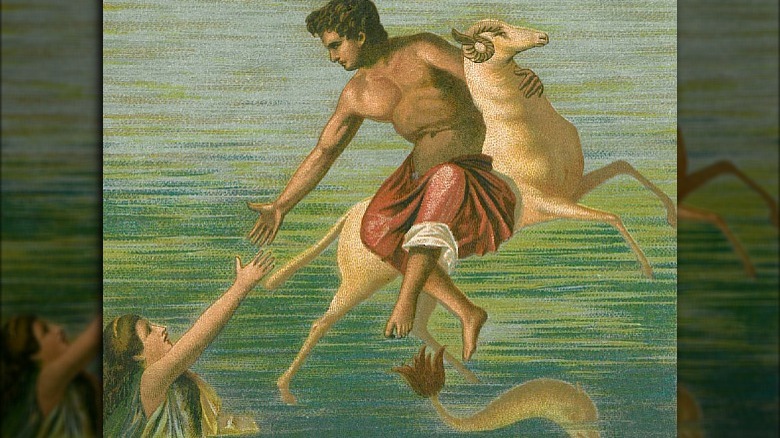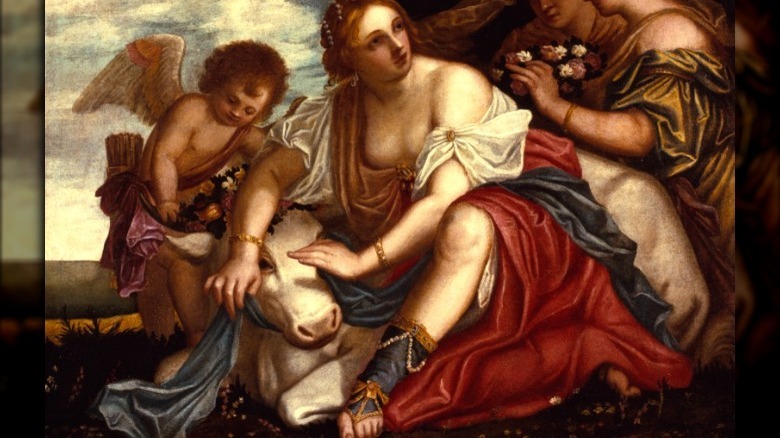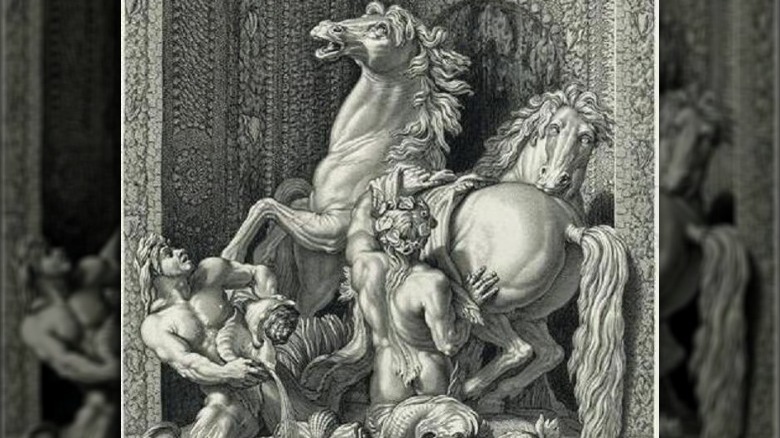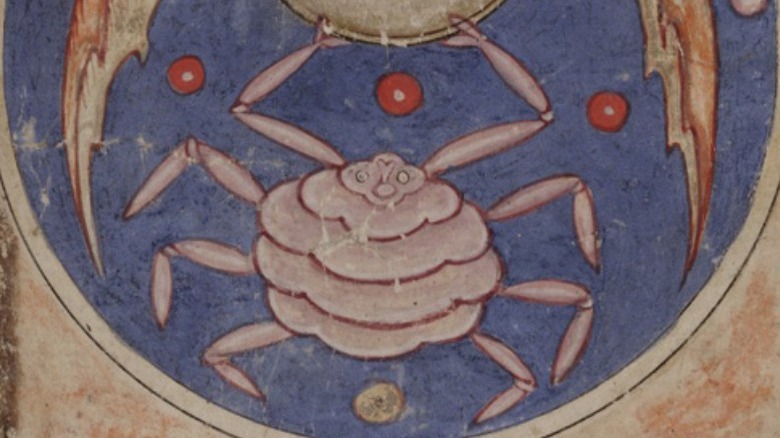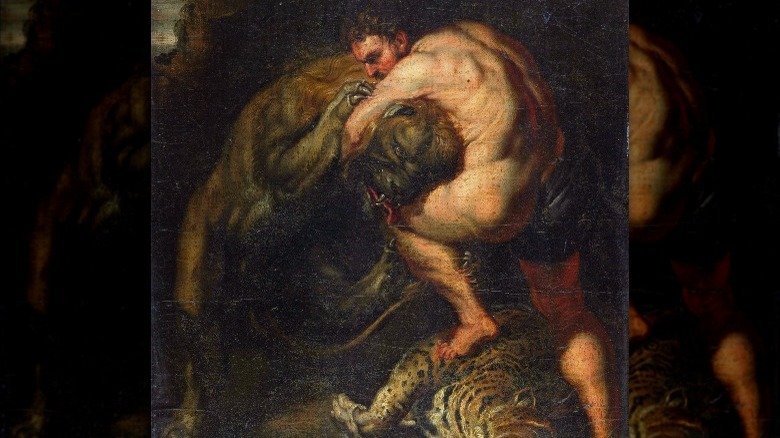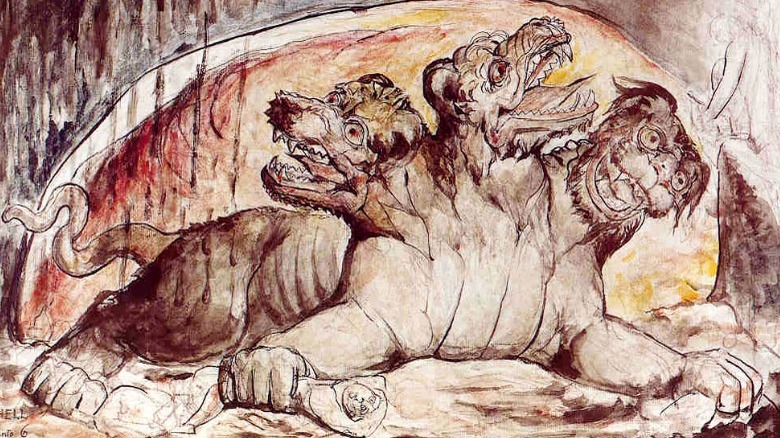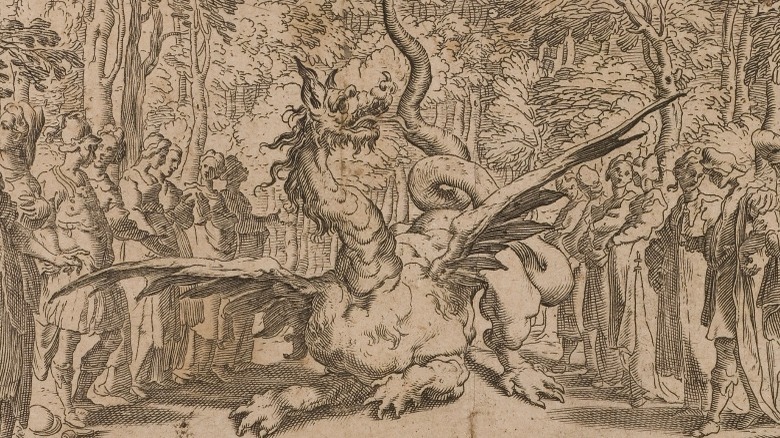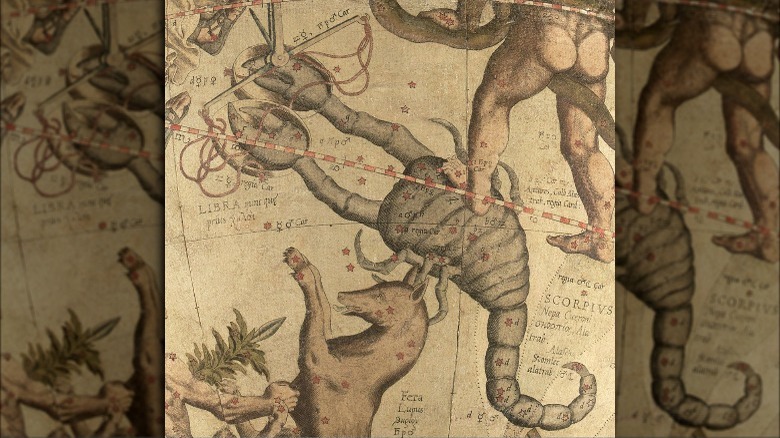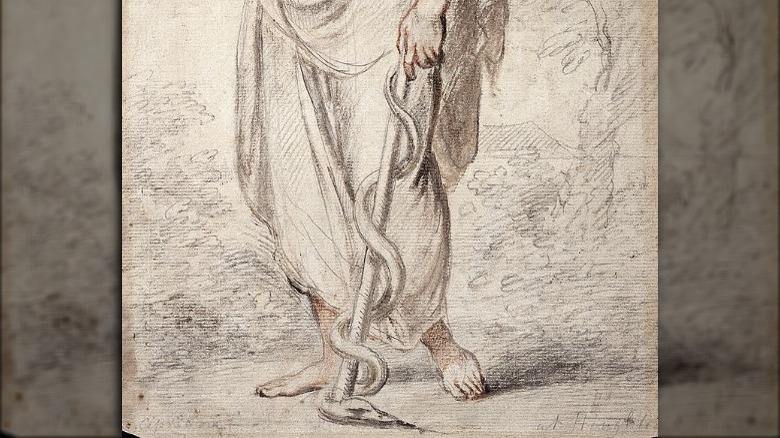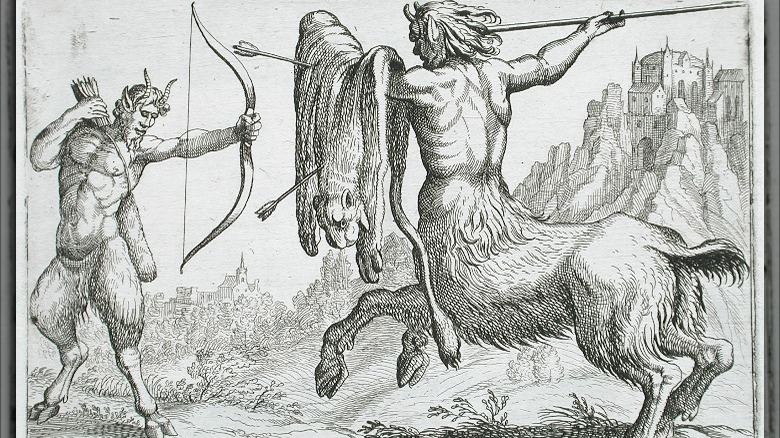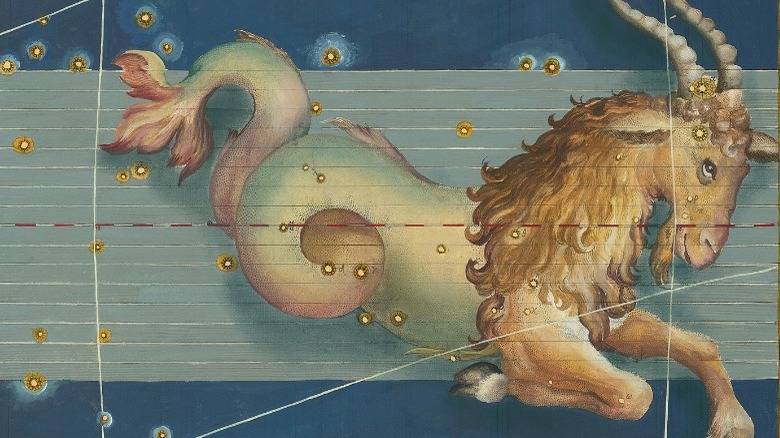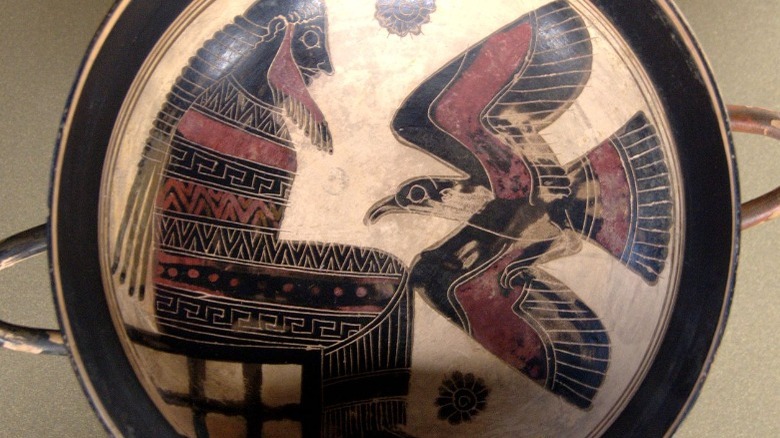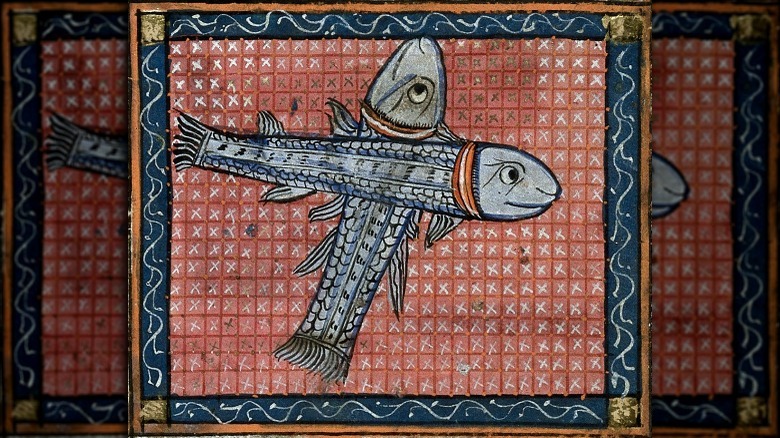Which Mythological Creature Are You Based On Your Zodiac Sign?
Most know what zodiac sign they were born under, and even if you don't believe that the stars will unlock the secrets of the future, it's pretty neat to explore some folklore, mythology, and yes, even science that goes back thousands of years.
Astrology and the zodiac wasn't always a fortune-telling device. As Astronomy Trek explains, our ancient ancestors used the movement of the sun through the constellations to keep track of time.
It's not 100% certain just when and how the zodiac came to be, but historians' best guess is that it was developed somewhere in ancient Mesopotamia or Egypt around the 3rd millennium B.C. The word "zodiac" comes from the Greek for "circle of animals." We talk about 12 such animals and star signs today, but back in ye olde times, there were 48 major constellations.
And they all had their tales to tell, fascinating stories of where they came from and who they once were. So, let's revisit those tales, and see which mythological creature you identify with, based on the Greek tales of the zodiac.
Aries: Khrysomallos, the golden-fleeced ram
Aries might be the sign of those born between March 21 and April 19, but it's the first sign of the zodiac (via Allure). It's a little odd, considering many — but not all — cultures consider January 1 to be the start of the new year, but thinking of the spring season as kicking off the annual cycle makes sense too.
Aries is one of the most ancient of constellations, and according to CosmoNova, it's been associated with the ram since ancient Babylonians used it in connection with the ram-headed god Amon-Ra. He was associated with fertility, but let's look to Greece for our beastly connection.
Aries is closely connected with a mythical, magical flying ram named Khrysomallos. When two children named Helle and Phrixos found themselves facing very short lives that were going to end with being sacrificed to the gods, their mother — the nymph Nephele — sent a ram with a golden fleece to save them. After the ram flew the children to safety, the creature told them to sacrifice him, instead. His golden fleece was installed in a shrine to Ares, and would later show up as the end goal of a quest undertaken by Jason and the Argonauts (via Theoi).
Taurus: the Kretan Bull
Those born between April 21 and May 21 are born under the sign of Taurus (via Cosmopolitan), and EarthSky says they have the honor of identifying with one of the brightest of all the zodiac's constellations.
Historically, Taurus has been associated with one of the most well-known tales of Greek mythology: Zeus' rape of Europa, the birth of King Minos, and ultimately, the Minotaur.
There are a few different versions of the story, says World History. At the heart is Europa, who is on the beach with her friends when she's approached by a docile white bull. The bull is either a shape-shifted Zeus or a creature sent forward from the ocean, but either way, the bull spirits Europa away to Crete when she tries to ride it. It's there that Zeus has his way with her, and they produce three children. The bull becomes the constellation of Taurus.
Alternatively, Taurus is sometimes said to be the Tauros Kretaios, or the Cretan Bull. That's the creature that Theoi says was sent to tempt Minos's wife, Pasiphae, into carnal relations that produced the Minotaur. Capturing the bull was part of the labors of Herakles, but it was only after it was killed by Theseus that it was put among the stars by the gods.
Gemini: the Horses of the Dioscuri
The zodiac sign of those born between May 21 and June 21 is Gemini, famously represented by the dual personalities of their constellation, the twins. Farmer's Almanac adds that the original twins were named Castor and Pollux, but what about mythological creatures?
Globe at Night says Castor and Pollux were twins born at the same time to the same mother, but who had two different fathers. Castor's father was King Tyndarus, while Pollux's father — Zeus — made him an immortal demigod. In spite of their differences, the brothers grew up incredibly close, and when Castor was killed, Pollux didn't want to live without him — so Zeus set them among the stars.
Theoi says they were also called the Dioskouroi, and they were known as the gods of travelers, guests, and horsemanship — which is where our mythological creatures come in. Gemini is most closely associated with the four immortal horses given to Castor and Pollux by the unlikely combination of Hera and Hermes. At least one source describes Pollux's horses, Harpagos and Phlogeus, as "swift foals of [the Harpyia (Harpy)]," while Castor's immortal horses, Xanthos and Kyllaros, were said to rival the horses of Ares himself.
Cancer: Karkinos the Giant Crab
Cancer is the zodiac sign of the early summer, covering those who were born between June 21 and July 22 (via InStyle).
EarthSky says that it's one of the most difficult constellations to see — so that's a bummer. Still, it's been an important constellation for more than 2,000 years, including the early days when it was thought to represent not a crab, but the gateway that souls passed through in order to descend from the heavens and be born into mortal bodies.
Cancer became associated with the crab thanks to Greek mythology, and Theoi says that Karkinos the giant crab gets a shout-out in works by ancient authors like Plato and Eratoshthenes. He shows up during the labors of Herakles, when the demi-god is fighting the Hydra. It's already something of a losing battle — for each one of the monster's heads that the hero lops off, two more replace it. As if that wasn't challenging enough, in the middle of the battle Karkinos came to the Hydra's defense, latching onto one of Herakles' feet. Herakles stepped on it and killed it when it bit him, and in thanks for the sacrifice — and, undoubtedly, as a little bit of a message to her husband's illegitimate son — Hera took the crab and placed him in the night sky.
Leo: the Nemean lion
Inspired by the lion, those born under the sign of Leo — between July 23 and August 22 — are kings and queens of the zodiac sign, too (via Allure). They're weirdly associated with a lion that — even though it appears invincible — ultimately gets skinned and worn as a coat.
Is this a cautionary tale? Maybe! Leo's lion was once the terror of an area called Nemea, says the Perseus Project. The Nemean lion was such a problem in part because its hide was completely impervious to arrows, so it took Herakles — who was capable of choking the lion to death — to kill it. (Which, incidentally, is why Herakles is often portrayed as wearing a lion's skin, which he removed using one of the lion's own claws.)
Globe at Night says there's actually a second story of Leo's lion, and this one features just an ordinary lion instead of a mythical one. In this tale, young lovers Pyramus and Thisbe are forbidden from seeing each other, and while Thisbe waits for him in a secret meeting place, she's frightened by a lion. The lion picks up the veil she drops as she runs away, and when Pyramus sees her bloody veil, he kills himself. She returns to find him and also commits suicide, much like the story of Romeo and Juliet. The lion and the veil were then put among the stars by Zeus.
Virgo: Kerberos, the three-headed hound of Hades
Virgo is the biggest constellation of the zodiac, and EarthSky says it can be hard to find. It also says that this constellation, which represents those born between August 23 and September 22 (via Cosmopolitan), is typically associated with Persephone, the daughter of the agricultural goddess Demeter and consort of Hades, god of the underworld.
And here's where we come to our mythological creature: Kerberos, the three-headed guard dog of Hades. In addition to the three heads, the Museum of Mythology says traditional depictions of Kerberos generally show him as also having the claws of a lion, a snake for a tail, and a mane made of still more snakes. It's no wonder, then, that he was notorious for not voluntarily letting anyone in or out of the underworld, with one notable exception.
That was, of course, Persephone. Kerberos let her pass freely between the land of the living and the land of the dead, while devouring anyone else who tried to cross the barrier between the two. (Orpheus, too, passed the hell hound, but needed to use a lyre to make the beast fall asleep.) Kerberos also has the honor of being one of the few mythological creatures that Herakles faced and didn't kill, but it's his association with Persephone that makes him a Virgo.
Libra: Python
Libra is a little unique among the zodiac signs, because this sign — which applies to those born between September 23 and October 22 — is the only sign one that's represented by an inanimate object: the scales (via Allure).
Libra, says author Jessica Davidson, has been a constellation representing a concept for a long time — around 4,000 years. It's also a little different than other signs because there's some debate about what the ancient Greeks believed. While some connect Libra with the goddess Astraea, it's also connected with her mother, the Titan Themis.
Astraea was usually seen holding a torch and Zeus' thunderbolts, but it was Themis who held the scales and was associated with law and justice. According to Theoi, Themis was also the original oracle at Delphi, and here's where the mythological creature of Libra comes in.
Python wasn't any ordinary snake, she (or sometimes, he) was a dragon-like serpent said to have been molded by Gaia (the Earth) from all of the rotting, organic material that was left behind after the world was cleansed by the Great Deluge. Originally sent to Delphi to protect the oracle, Apollo helped usher in the reign of the gods over the Titans when he killed Python and took control of the oracle from Themis. Reference to the serpent lived on in the name of Delphi's oracle — the Pythian — and in tales of the beginning of law.
Scorpio: Skorpios, the Giant Scorpion
The Farmer's Almanac credits Scorpios — those born between October 23 and November 21 — as the most "intense" of people, and according to the Hawaiian Astronomical Society, the constellation of Scorpius is a little different from most. While many constellations might only look like what they're named after if you apply some serious imagination, Scorpius actually looks like a scorpion. In traditional Hawaiian beliefs, it's not a scorpion, but a fishhook.
In Greek mythology, though, Scorpius is definitely a divine scorpion summoned and sent by the gods. After Orion boasted of his hunting prowess and his ability to kill any creature, Gaia sent a giant creature named Skorpios to kill him. (Theoi notes that there are alternate versions of the myth that say that Orion claimed he was going to kill all the animals in the world, and Gaia sent her mythological scorpion to stop him.)
Skorpios came out the victor, and killed Orion. Artemis intervened on behalf of her friend, asking Zeus to put the hunter among the stars. He did, and he also put Skorpios in the night sky, too — opposite Orion. The two are never seen together, with one rising as the other sets.
Ophiucus: the snake of resurrection
Anyone born between November 30 and December 18 gets a bonus: Space says Ophiuchus fulfills all the requirements for being a zodiac sign, yet is defined as a constellation within the zodiac, not a separate sign. Still, for anyone with a birthday there, give Ophiuchus some love.
The constellation Ophiuchus is associated with the healer Asclepius. The constellation is a combination of the healer and a giant snake that he's holding, which Interstellarium says is called Serpens.
The Snake Bite Foundation says Asclepius was inspired to learn the healing arts after killing a snake and seeing another snake come along and resurrect it with the aid of some herbs. Asclepius then used the same herbs to create a portion that could resurrect a dead person (with some versions of the story saying that it was the snake who whispered the ingredients of the concoction to this early doctor). Hades, the god of the underworld, realized that he'd be out of a realm to rule if Asclepius and the snake were allowed to share their wisdom, so he had Zeus kill them both and put them in the night sky.
Sagittarius: Krotus the Satyr
The "official" sign of those born between November 22 and December 21 is Sagittarius, says Allure, and the stories behind this one are a little complicated. EarthSky says that Sagittarius is commonly associated with a centaur, although they also note that the make-up of the stars and the shape of the constellation actually makes this pretty hard to see.
And that's why it makes sense that there's another theory: Sagittarius wasn't originally a centaur at all, and it was only ancient Rome that put the half-horse, half-man among the stars. The ancient Greeks, it's suggested, said that Sagittarius was actually a satyr.
It's a similar concept, and satyrs are essentially the back half of a goat with a man's body on the top. Sagittarius is known as the archer, and that's why it makes even more sense to associate the zodiac sign with the mythical satyr.
According to Theoi, the Muses befriended the satyr Krotos. Krotos is credited with basically inventing the idea of drumming and accompanying music with a regular beat. He was also a massive fan of hunting, and he didn't just use the hunting bow — he invented it. On his death, the Muses went to Zeus and asked him to make the mortal satyr immortal, and he was placed in the stars as Sagittarius.
Capricorn: the sea-goat
The holiday season — December 22 to January 20 — is governed by the zodiac sign Capricorn, says Cosmopolitan. And yes, while Capricorn is associated with the goat, there's a little more to it. Author Jessica Davidson says that goats were one of the first animals that humans domesticated, and it sort of makes sense that we've been telling stories about them for almost as long.
That includes tales of the sea-goat, a creature with the head and shoulders of a goat and the back end of a fish.
Weird? Certainly, but it's not the only half-fish creature out there. The mythological sea-goat predates ancient Greek mythology and goes all the way back to Sumeria, where locals were telling tales of the "crested goat-fish" Suhur-Mas-Ku around 3,000 years ago.
Greek mythology's original sea-goat was named Pricus, and he was created by Kronos to rule the passage of time underwater. Pricus fathered a herd of little sea-goats, and each one was so curious about what was on land that they would all leave the water to find out. Once on land, they would turn into four-legged goats, and forget who they were and where they came from. Pricus kept messing about with time to bring his children back to him and try to prevent them from all leaving him, but eventually became so lost and lonely that he asked for death. Kronos granted his wish, and placed in him the heavens as Capricorn.
Aquarius: Aquila, eagle of Zeus
January 20 to February 18 is under the sign of Aquarius, and even though it might sound very water-related, as Allure points out, it's actually an air sign. There are no fishy mythological creatures here. Instead, the mythological creature associated with Aquarius is Aetos Dios, the mortal king who was turned into the eagle of Zeus.
Universe Today says that the constellation Aquarius is an ancient one — it showed up in the second-century astronomy text by Ptolemy, and he was the one who officially recorded the already ancient Middle Eastern concept of the eagle.
According to Harvard's Chandra Observatory, the eagle has always been seen as something of a royal bird. It's not entirely surprising, then, that Zeus was said to have a magical, massive, and mythological eagle that not only carried his thunderbolts, but occasionally headed down to the mortal realm to grab a poor, unfortunate soul that had caught Zeus' eye.
That included the Trojan prince Ganymede, who was so beautiful that Zeus knew he had to have him in Olympus, serving as the gods' cupbearer. According to Theoi, Zeus eventually put both the prince and the eagle in the heavens as Aquarius.
Pisces: the Ikhthyes
Pisces is the last sign of the zodiac, and every February 19 to March 20, Allure says the annual zodiac cycle winds down with this watery sign.
Pisces is, of course, represented by the fish, but EarthSky says that the constellation isn't just a fish, it's two fish that appear to be tied together by their tails.
In Greek mythology, these are the Ikhthyes, and there are two different versions of the story. In one, Theoi says they were two massive fish that intervened on behalf of Aphrodite and her son Eros as they were running from the winged storm-giant Typhoeus, who would eventually be condemned to Tartaros by Zeus. Those two fish are also sometimes connected to the two Ikhthyokentauroi, which are the fish-tailed horses that helped deliver Aphrodite when she was born from the sea foam.
In other versions of the story, the fish are Aphrodite and Eros themselves. When trying to escape Typhoeus's wrath, they were said to have turned themselves into fish and tied their tails together so they wouldn't lose each other in their flight.
The stories all end the same, with the two fish immortalized in the constellation of Pisces.
